

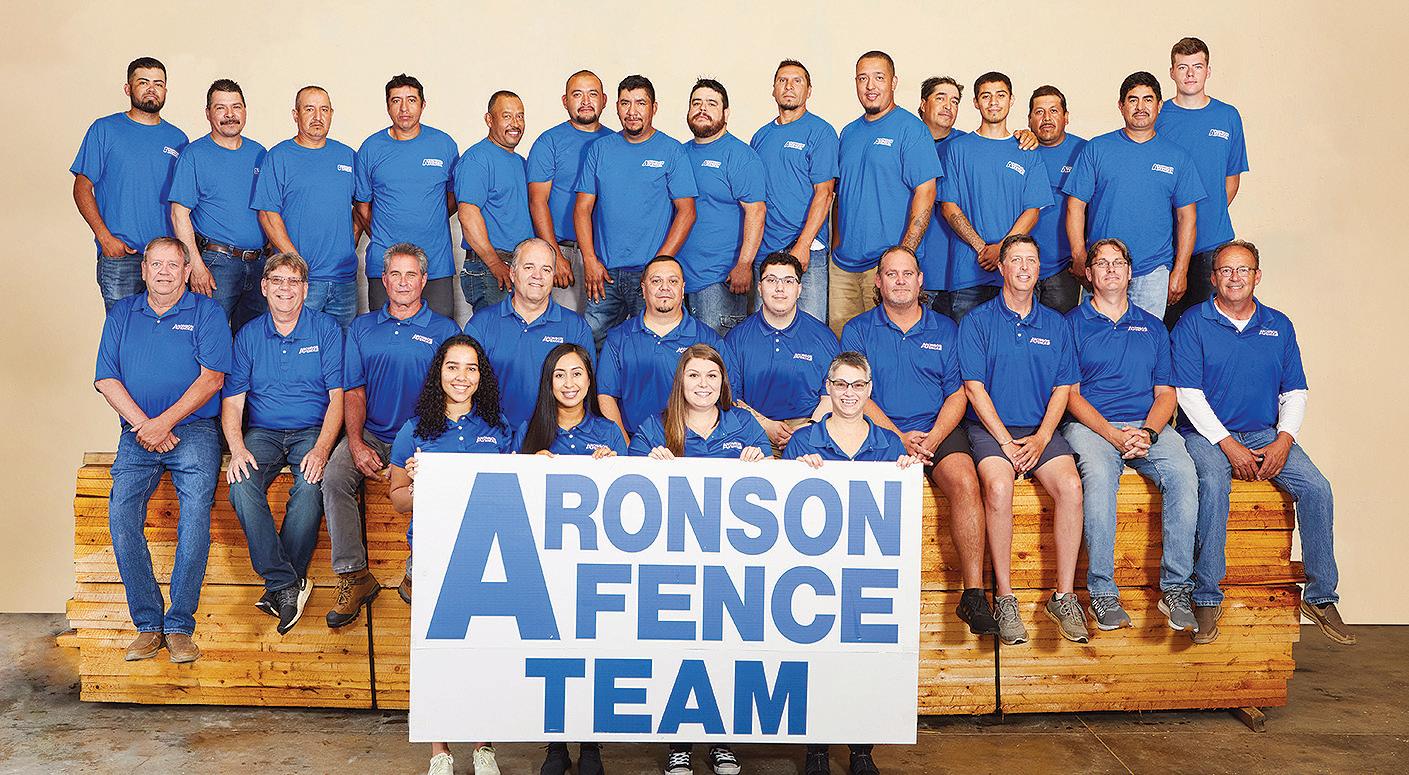












An uptick in sightings of the federally endangered rusty patched bumble bee is creating a buzz in Lake County.

Nine rusty patched bumble bees were found at six of 13 Lake County forest preserves recently surveyed
The rusty patched bumble bee has declined by 87% in the past 20 years, according to the U.S. Fish and Wildlife Service. The bee was placed on the federally endangered species list in 2017. It’s one of 10 bumble bee species in Illinois and the first pollinator protected under the federal Endangered Species Act. Habitat loss, pesticide use, climate change, intensive farming and possibly disease are factors for the decrease in numbers.
“We’re ecstatic to see these elusive bumble bees in the forest preserves,” said Pati Vitt, director of natural resources at the preserves. “Increased monitoring and awareness, including a new program that trained volunteers in the field, are factors in spotting additional bees.”
This is the first summer volunteers were added to the bee monitoring program run by Alma Schrage, a bee biologist who contracts
with the Forest Preserves.
Why are bumble bees important? “They are a ‘keystone species’ in functioning ecosystems,” Vitt said. “Their work is necessary for wildflowers to reproduce and to create seeds and fruits that feed wildlife and humans.”
Healthy woodlands, grasslands and tallgrass prairies are essential to the rusty patched bumble bee’s survival.
“The work we do across the Forest Preserves to restore and maintain healthy, diverse landscapes helps bee species thrive,” Vitt said. “Finding these bees tells me that our efforts are working.”
Pine Dunes in Antioch is a prime example of a successful restoration project where a rusty patched bumble bee was recently spotted.
“The preserve was largely agricultural, so the likelihood of rusty patched bees living there was quite low before restoration efforts took place,” Vitt said.
“Restoring land provides a place for native plants and wildlife,” Vitt added. “It also increases biodiversity and makes our landscapes sustainable for future generations.”
top: Nine rusty patched bumble bees were found in six Lake County Forest Preserves recently. Alma Schrage, a bee biologist, runs a bee monitoring program for the forest preserves.
ALMA SCHRAGE PHOTO Spirit of the LakesOn the cover: Cross country skiing is one of the best ways to get in some exercise, especially on a bright winter day. For more winter activities, go to Page 5.
PHOTO COURTESY OF RICK MYSLINSKIKER Spirit of theLakes
The Spirit of The Lakes is a complimentary publication, distributed throughout the Chain O’ Lakes and Kenosha County area. Keeping up with the same great tradition as the Spirit of Geneva Lakes.


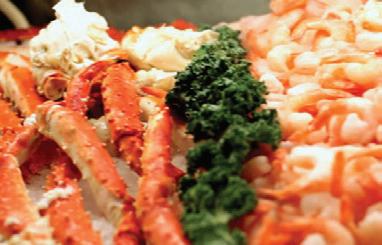





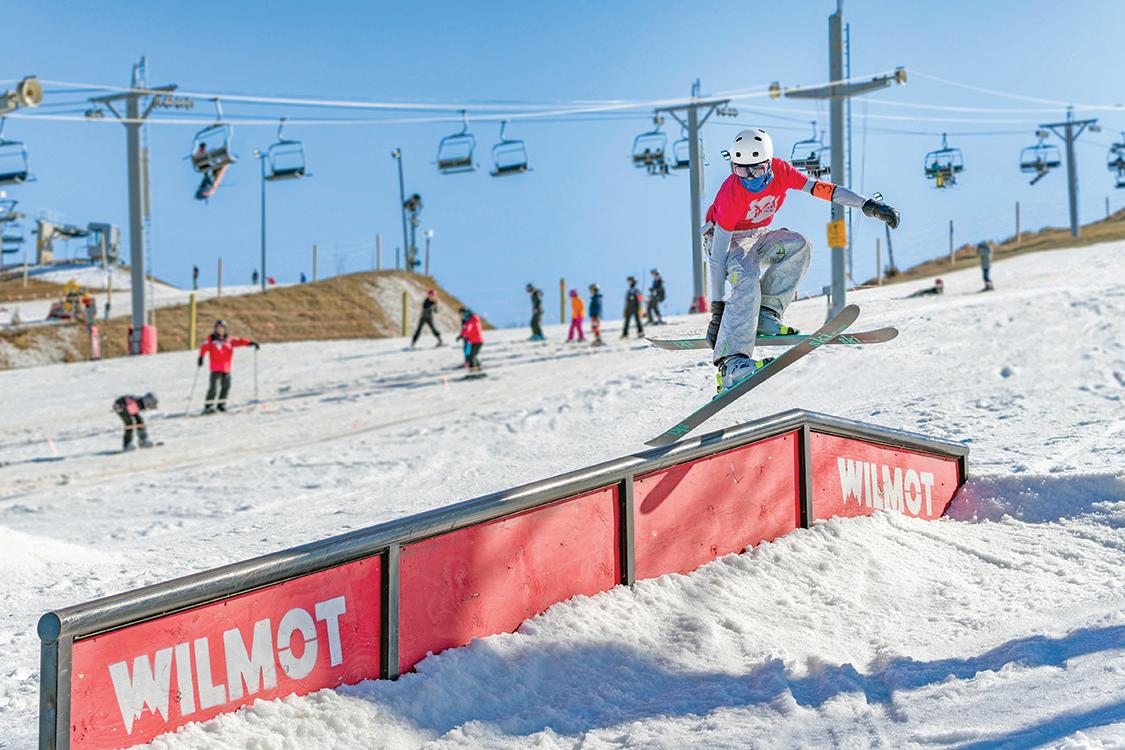

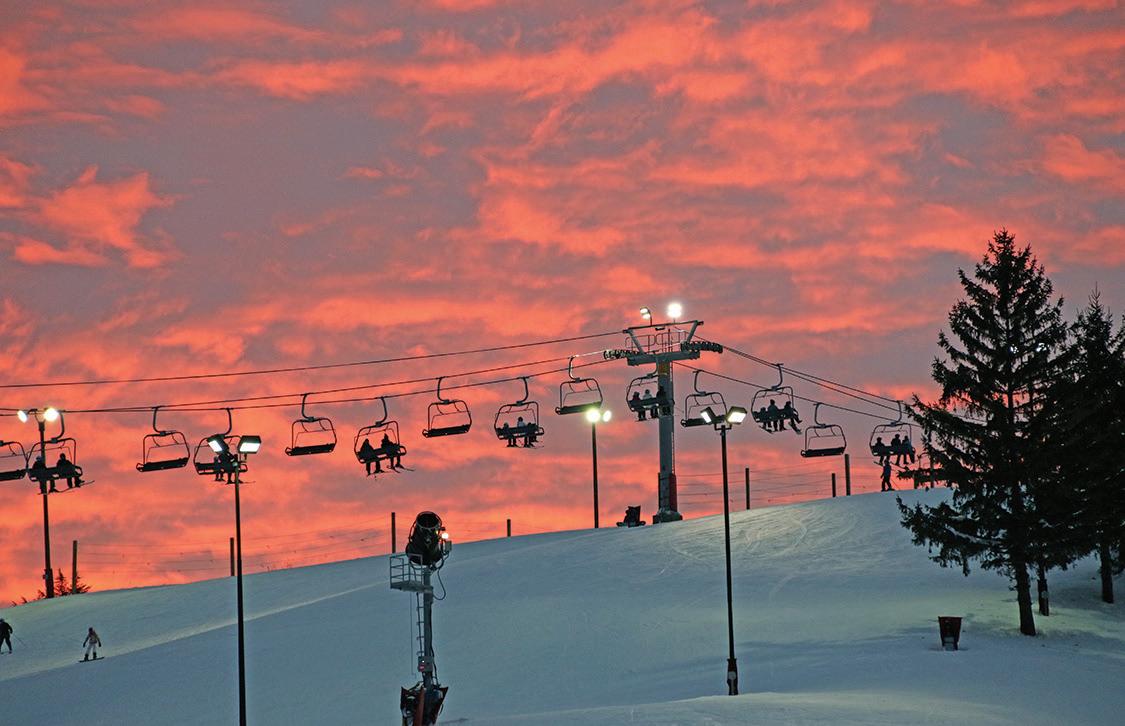
When the weather drops below freezing and the snow begins to fall gently through the trees, it is time to move from indoors to the outdoors to enjoy the beauty of the white winter wonderland. For many that means pulling out the skis and poles and heading to the ski trails or ski slopes, depending on personal preference.
In the Midwest residents are fortunate to be able to choose between cross country or downhill skiing as there are ample areas to enjoy both.
For cross country, natural snow is necessary as it is difficult to cover miles of trails with man-made snow. For downhill skiing, ski resorts have snow making machines








that make certain that once the temperature drops below freezing, there is always a comfortable covering of snow on the ski mountain for a smooth ride down.
Locals looking for a popular place to downhill ski, that is easily accessible to those in the Chain O’Lakes region, Wilmot Mountain, 11931 Fox River Road in Wilmot, Wisconsin, just over the IllinoisWisconsin border is the place to go.

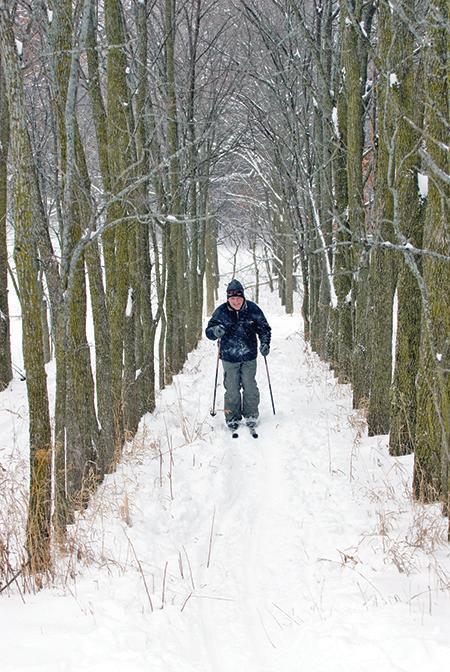
In 1938, Walter Stolpa was looking for a place to open a ski hill and introduce downhill skiing to the Midwest. He chose this area because of its terrain, formed by the glaciers that once covered the area.
Stolpa originally rented the land from a local farmer and called his ski hill Wilmot Hills. It was not long before it became the popular go to place to learn and enjoy downhill skiing, especially for local families who could not afford to head out to the western ski resorts such as those in the Rocky Mountains.
Stolpa quickly learned that his business was very dependent on the snowfall of the area and unfortunately some winters there was just not enough heavy snow.
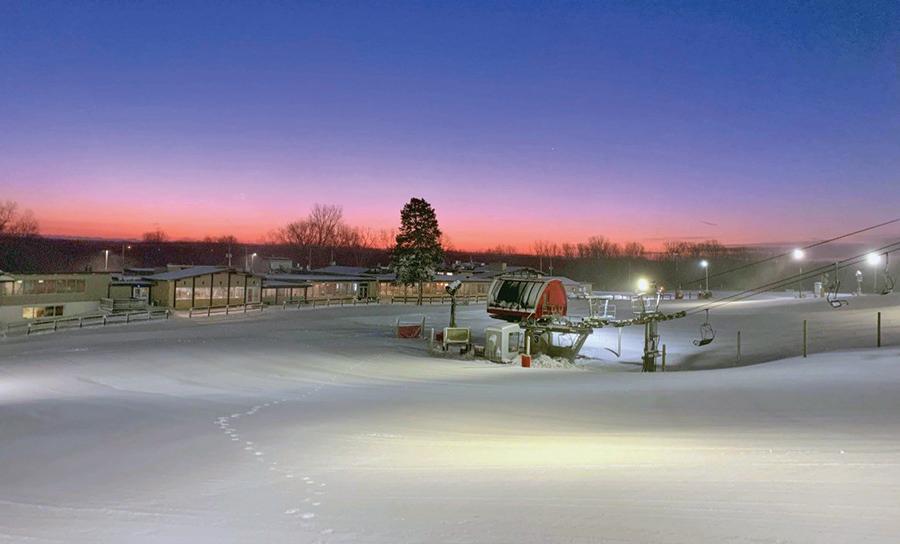
So, he invented a way to make his own snow. Using rubber hoses, aluminum pipes, sprinkler heads, water, and air, he was able to add snow to the mountain. Today this rudimentary method of creating snow has been replaced by more modern and sophisticated equipment but the result is the same – snow covers the ski hills.
Wilmot Mountain, according to its website, was the first ski hill to install lights so skiing could continue after sunset. Wilmot became popular with visitors from both Illinois, and Wisconsin and by the early 2000s, they added a tubing hill adjacent to the ski area, a place especially enjoyed by families with younger children.
“In 2016, Vail Resorts purchased the property and invested $13 million dollars to upgrade it,” Wilmot Mountain Manager
above left: Ice skating is another popular winter activity that can be enjoyed by both children and adults. Safety, especially being certain that the ice is solid is important. Ice skating is available at Lakewood Forest Preserves. above right: Cross country skiing is a way to enjoy the serenity and beauty of the outdoors while engaging in exercise. below: Once the temperature remains below freezing snow can be created by the snowmaker to assure downhill skiing all season. Wilmot’s snow makers work at night when needed to assure a great skiing surface.
COURTESY OF CHIP WILLIAMS Spirit of the LakesChuck Randles said. “Today with many of the Vail Epic improvements to the site and new programs, there is something for everyone from skiing and snowboarding, to tubing and enjoying the picnic area and refreshments.”
One of the improvements was the addition of new chair lifts in 2016. The new lifts include three quad chairlifts which increase uphill capacity by 45%, a high speed double rope tow in the terrain park and two new surface conveyor lifts in the beginner area make getting to the top quick and efficient.
Like many things in life, learning while you are young makes it easier to excel in the activity. The Wilmot Ski School offers the opportunity for youngsters 3 years of age who are potty trained to participate in the ski program.
“We offer a three-week program, where the students receive a lesson once a week for three weeks which gives the children the ability to feel secure on the skis and helps them develop the muscle memory needed to ski. We provide rental equipment which they may take home and bring back to class each week,” Randles said. “Some of the students will repeat the session, giving them six weeks of lessons. After that they should be ready to move on to the Race Development League, the next step in skiing instruction if desired.”
Private lessons either individual or family group may also be taken. Adult lessons are available and are recommended for those new to skiing to make them more comfortable on the mountain on their early outings. Over the years many have learned to ski at Wilmot including Kirsten A. Lynch, who became CEO of Vail Resorts in 2021.
Downhill skiing is a fun, active, social activity shared with friends and family as one rides up the chair lift and flies down the ski run.
The planned opening of this year’s skiing session is Dec. 9. It seems that the opening would depend on the first snowfall but it depends on the weather remaining below freezing so the manufactured snow can remain frozen. Check with Wilmot for changes in opening dates.
Skiing uses up calories so breaks for a snack and some hydration are important. There are three places to go for food. Walt’s Tavern named after the founder of Wilmot Mountain was created in 2016 and is now being refreshed to provide fast casual food with orders being brought to the table where beautiful views of the mountain can be enjoyed.
“Walt’s is known for providing the Wisconsin four food groups – beer, brats, bloodies (Bloody Marys) and tots, known elsewhere as tater tots,” Randles said. “The Ski Hill Grill provides cafeteria style dining with more variety including burgers and chicken tenders while Second Wind, open weekends only, is the quickest of the quick, with everything kiosk style.”
On weekends, enjoy the Kringle afternoons as trays of Racine Kringles appear each Saturday and Sunday for all to enjoy. Kringles are the official pastries of the State of Wisconsin.
While it may be early to speak of the end of the season, the ski season will wrap with a Spring Fling as skiers will attempt to ski over a pond and avoid the splash. Sign up for the pond skim and begin training now.

Purchase an Epic Pass online at www. wilmotmountain.com prior to the season for the best price. Day passes or season passes are available for your ski season enjoyment. Prices are lower online than at the window and fees less expensive weekdays rather than weekends.
Cross country skiing has a very different vibe than the downhill skiing we have been discussing. Cross country skiing is a peaceful, serene, more solitary experience.
For cross country skiers winter means following the natural snow that falls from the sky and turns the world into a wonderful, clean peaceful winter wonderland.
At this time of year, cross country skiers grab their skis and poles and head for the Lake County Forest Preserves where there are numerous trails, including nearly 189 miles of challenging and scenic crosscountry trails. From easy beginner loops to challenging loops that are perfect for more advanced skiers, the trail perfect for enjoying time on the snow is waiting.
Cross country skiing at the Lake County Forest Preserves provides the best in trails for skiers of all ages, skiing styles, and abilities. Most of the trails are regularly groomed using new grooming equipment obtained by the forest preserve.
Groomed trails are available at the Lakewood Winter Sports Area, Old School Trail and along the Des Plaines River Trail. Grooming is usually done two days after a large snow. When conditions allow, the dedicated equestrian trails at Lakewood and Raven Glen and most forest preserve hiking trails can be used by skiers.
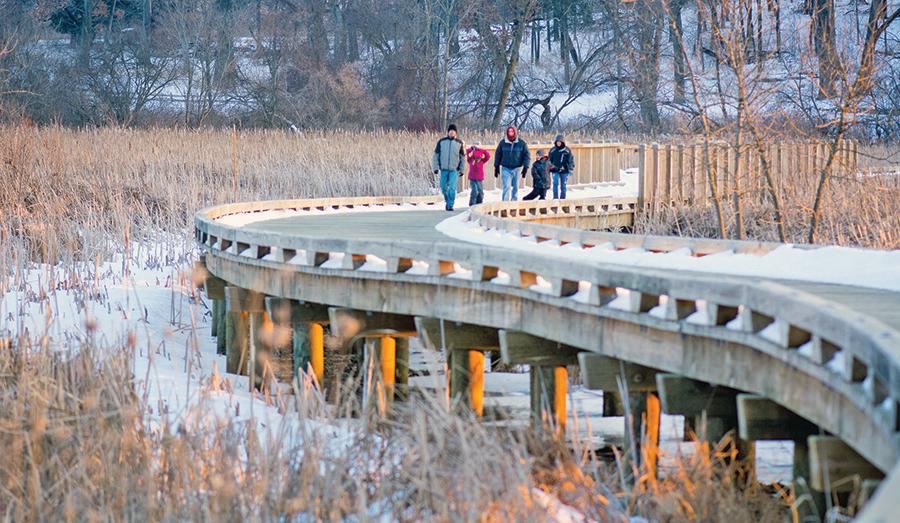
There are trails to meet the needs of beginners, that is flat open terrain or try circling the lake at Old School Park. For the most challenging ski trail it is the 1-mile loop trail at Lakewood Forest Preserve’s Winter Sports area which offers a series of hills.
Groomed trails make skiing easier and more enjoyable but in the early days of cross country skiing there were no groomed trails. As early as the year 1200, when cross country skiing was used strictly
above: An exercise that is enjoyable year round is walking. Enjoy the beauty of the forest preserves as snow covers the ground and coats the trees. top: Students as young as 3 yrs of age are ready to begin their skiing lessons on Wilmot Mountain. Hear them laughing and giggling as they struggle to maintain their balance and learn to ski.
for transportation in the Scandinavian countries, residents tied boards to their feet and traveled through the snowy and mountainous areas the military of these countries developed ski units and one of the best known stories of the importance of these units was that of the Norwegian Birkebeiners in 1206.
King Haakon was murdered, and members of the military took the infant prince on their backs and skied across the country with him to safety, approximately 55 kilometers.
Today there are races commemorating this event, called the Berkebeiner in honor of this old military unit. One such, in this area has skiers traveling from Cable to Hayward in upper Wisconsin. The race is also 55 kilometers in length.
There are two types of cross country skiing, the traditional skiing that uses two tracks as the skier propels himself forward as if walking except the skis glide. This requires a lot of work by the skier and thus it is known as one of the best forms of aerobic exercise. In the 1980s another form of cross country skiing became popular. It is known as the skating method. Rather than staying in
tracks, the skiers would use a skating motion to move along.
As the skating method became popular, there was disagreement between the traditional skiers and the skating style as the skaters would destroy the groomed tracks the traditional skiers used. Today there are often spaces for each style of skiing.
Because the skiers use their energy to propel themselves and they are out in nature, they must carry snacks and fluids to restore hydration and energy as needed. No restaurants are found out in nature, in the middle of the forest preserve.
Dressing for cross country skiing means dressing in layers which can be removed as the skier heats up. The layer closest to the skin should be a fabric that will wick moisture away from the skin. Keeping the skin warm and dry is important. As in downhill skiing, warm hats are needed. Warm gloves and socks are important to conserve warmth in fingers and toes. Dress correctly for both fun and safety.
Cross country skis can be rented from local sport and ski shops in Lake County for anyone who don’t have their own equipment.
Is it the serene beauty of the area that attracts creative people to make their homes here? Or do residents of the area become more creative because they live in this beautiful area? It sort of goes back to the old “Which came first the chicken or the egg?”
Whatever the reason, there are a variety of authors, photographers, and other artists who live in the area and are well known for their creative abilities and have been very successful in their arts.
Many of these creative people are your friends and neighbors who share the same everyday life as you, grocery shopping, visiting the library, attending local churches, and sharing cookouts with friends and neighbors. But when they are not
top: Michael Brown in his workshop putting the finishing touches on a print as he trims it down.

being an ordinary citizen of the area, they are exercising their creative juices and producing wonderful books, or unique artwork.
Here are three creative individuals who live here in Lake County. Learn about their work and who these neighbors are.

For author Michelle Cox of Grayslake, life is good but very busy. Married and the mother of three boys, she has also just launched the 6th book in her popular Henrietta and Inspector Howard series.
Cox began writing at a young age although these early attempts were not published. Today her days begin after she sends her family off to school and work, and she retreats
right: Michelle Cox, author of the Henrietta and Inspector Howard series takes readers back to the 1930s when life was more formal, especially for the wealthy residents of the north shore.









to her office where she enjoys the quiet peacefulness of the day and can write in solitude.
“Some authors need activity and prefer to go places where others are around to write,” Cox said. “I prefer to be in a quiet spot where I can concentrate on my writing.”
Her books have been very successful, having won more than 50 awards including some international ones, and have been praised by Kirkus, Library Journal, Publishers Weekly and Booklist. Not a bad way to begin with a first series.
Cox also appears at many conferences and is often on writer’s panels sharing information about writing and her books.
In addition to working on her books, Cox also keeps up her website and maintains a weekly blog through her website www. michellecoxauthor.com.
The blog is titled Novel Notes of Local Lore dedicated to Chicago’s forgotten residents.
The Henrietta and Inspector Howard Series can be thought of as historical novels, mystery novels, or romance novels. However, one would classify them, they would be correct.
The series is placed in Chicago and the north shore in the 1930s when life was different and very formal and class conscious. Not surprising the book is set in this time period as this is Cox’s favorite period of time. The wealthy lived on the north shore then as many do now and maintained large homes with servants and followed strict rules of etiquette with
formal dress for dinner and meals served in dining rooms by servants.
For Cox, she has researched the period well. Even some of her characters come from real life people she has known. Henrietta’s job was based on that of a woman she once met.
When the first book of the series was published, she held its launch at a local bookstore, This Old Book in Grayslake. She returned to launch the second and third of the series at this same location.
It is not surprising that for the launch of the sixth book of the series, she returned to her home town and held a launch party again at This Old Book Oct. 27. Attracting readers who have enjoyed the earlier books and new readers, the launch parties are always a happy time. Gift prizes also add to the fun of the event.
On Nov. 16, Cox will be publicizing her latest book at Book Cellar in Chicago. She will appear jointly with another local author Mia Manansala. If you missed the launch at This Old Book, take a trip to the Book Cellar for this program.
Michael Brown is a well known photographer. His photography is not the traditional type one is used to seeing, rather he is a lenticular artist who produces unique photographs that change as you meander past them, known as kinetic photos. He also creates dimensional pieces that are 3D photographs that can be viewed with the unaided eye. No special glasses are needed
to see the depth.
“The process is called lenticular printmaking. It is based on optical concepts discovered about 100 years ago,” Brown said. “The process is rarely used today due to the cost and complexity of creating the imagery.”

To create the kinetic pictures that change as the viewer walks by, requires taking photos of the exact same scene in different seasons. Finding that exact spot and view is not easy. He marks the spot and always sets his tripod in the exact same place, following careful notes he has taken and noted references such as rocks, stumps, or even a crack in the sidewalk.
While Brown began his career as a traditional photographer but he soon became fascinated with the 3D photography and the kinetic photos and taught himself these skills.
“For many, the 3D photos take one back to childhood when early 3D photos were sometimes the prize in Cracker Jack,” Brown said. “Today the photos I create are more complex.”
Throughout the year, Brown, and his wife, Nancy, travel to various art shows throughout the nation. At the art shows his booth is always filled with spectators who enjoy seeing his unique art.
“You will see a lot of commotion in my booth as people sway from side to side to make the pictures transform from one season to another,” Brown said. “It is a very happy booth, filled with laughter.”
During the pandemic, Brown was basically only selling art through his
To provide the unique lenticular art that Michael Brown creates requires several processes and the taking of pictures at the same exact spot in different seasons. COURTESY
website while he continued to work on perfecting his techniques. But now he is back to attending art shows about 25 per year from local shows such as The Lake Geneva Art Fair and the Naperville Art Fair to others as far away as Boca Raton, Florida.
“We pack up all the art in the van and make our way to the art fair of choice,” Brown said.


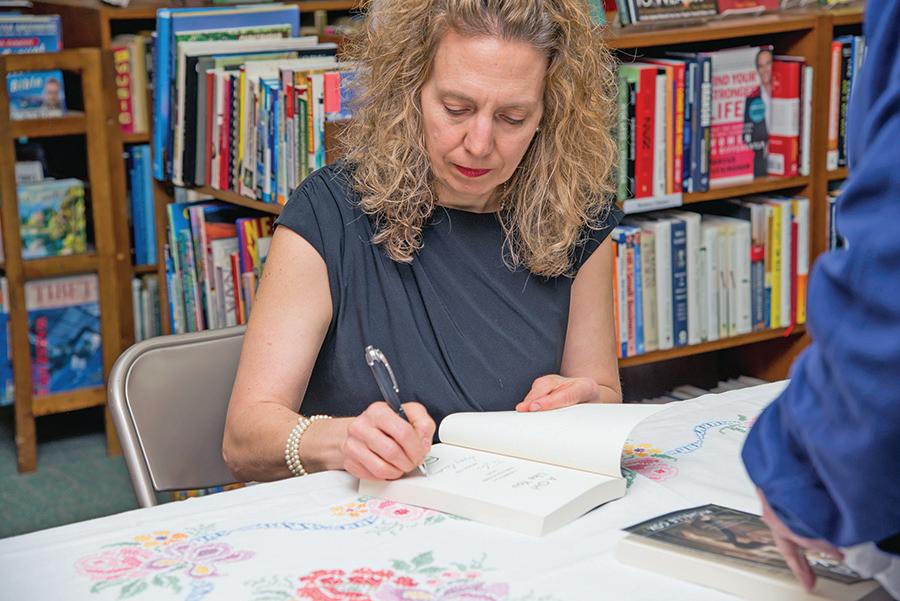


Brown worked for Kodak, which downsized in 2005. He like many others lost his job. He did not see this as a problem but as an opportunity.
“I had been doing some art fairs part time while working for Kodak, so when they downsized and I lost my job with them, I realized that I now had the chance to try doing art shows full time,” Brown recalled.
So armed with a severance package, he was ready to jump start his personal art as a full time job.
“Since our children were home schooled, we were able to pack up the family, leave our home base and travel to art shows. I was able to turn this into a full time job and support the family.”
Brown succeeded in doing so. His children are grown and now just he and Nancy travel to the art shows.
His work is on display in many places. In 2008, the State of Illinois created the States Art in Architecture. He contributed 12 unique large format kinetic art pieces which are on permanent display at the University Center of Lake County. Public collections are owned by the villages of Oswego and Schaumburg.
Brown continues to work out of his studio in his home in Antioch.


lenticular photographer Michael Brown, and often helps him with his art shows. But Nancy is also a creative person, an author, in her own right.
While raising her children, Carpentier Brown became interested in G.K. Chesterton, the prolific writer of the 20th century. According to the G.K. Chesterton website, Chesterton wrote 100 books, contributed to 200 more, wrote hundreds of poems, and some two hundred short stories including the popular series featuring the priest detective Father Brown, seen on PBS television.
“While there was plenty of information about G.K. Chesterton, there was little information easily attainable about his wife, Frances, who loved and lived with this extremely intelligent absent minded man,” Carpentier Brown said.
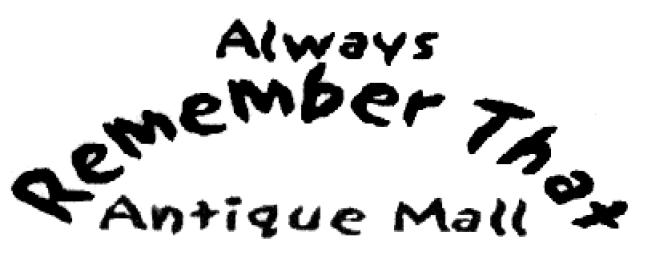

She researched Frances Chesterton for eight to 10 years with much of that research conducted at the Wheaton College library. She subsequently wrote the book “The Woman Who was Chesterton,” the story of Frances Chesterton.
Adapting the Father Brown mysteries for children has been another job that Carpentier Brown has undertaken. She has adapted four of his books for them.
The “Father Brown Reader” is another of Nancy Carpentier Brown’s creations. This book has been adopted as part of the home school curriculum, bringing the Father Brown stories to children.
“The Chestertons and the Golden Key” is a stand-alone book, a work of juvenile fiction that brings Gilbert Chesterton into the lives of a local family with three young girls all with dreams of their future. The effect of the Chestertons on their dreams and plans makes for an interesting story.

When Carpentier Brown is not writing or traveling around the country helping her husband set up and manage his art displays, she is at home in Antioch.


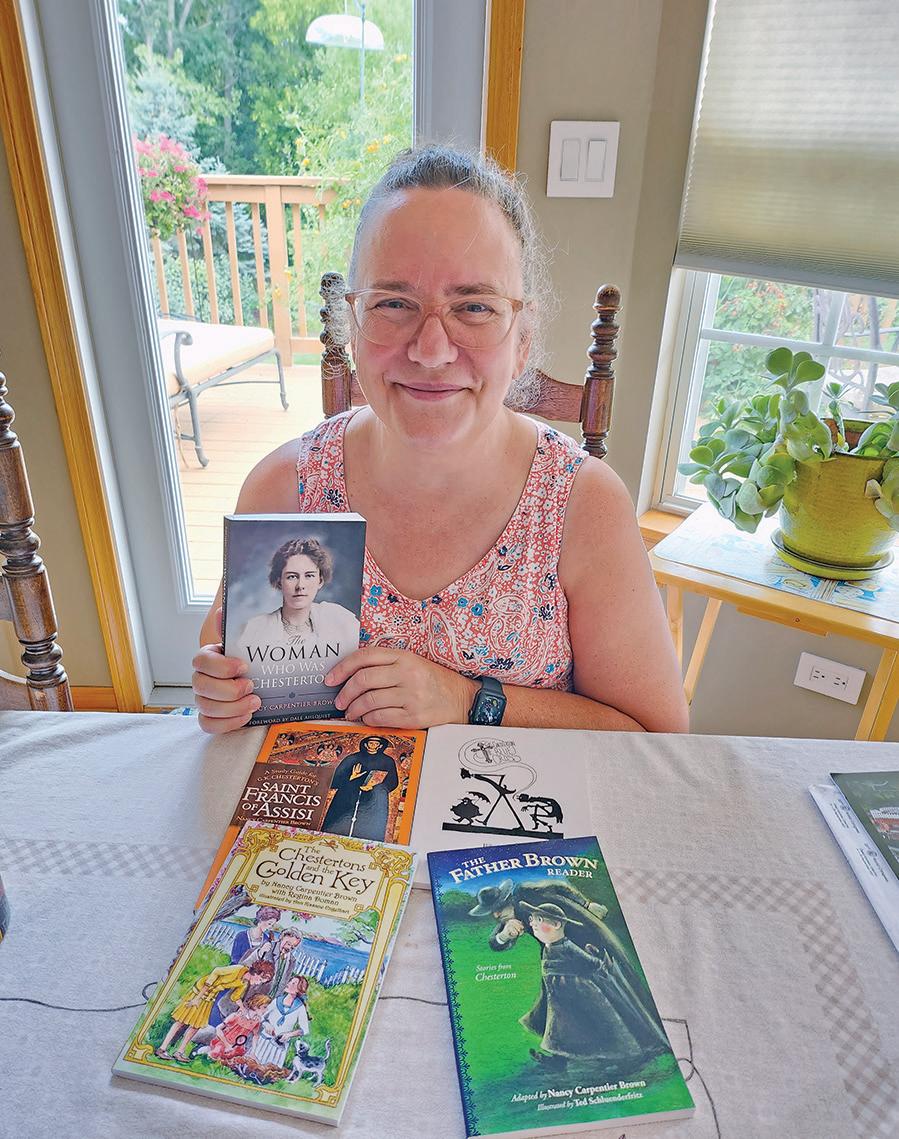
Main Street at the Lake Geneva Museum will be turned into a holiday wonderland as the fourth annual Parade of Trees opens Nov. 19 on the museum’s Main Street.
Main Street will feature an array of lighted Christmas trees to give the spirit of the holidays to the museum. Each tree is unique as they are designed and constructed by individual groups that interpret a vision of the perfect Christmas tree.
The trees are sponsored and designed by businesses or organizations in the area. It can be a traditional tree or one that represents their business or organization. There is no cost to being in the Parade of Trees other than the cost of the tree and decorations. All trees must be artificial with LED lights and preferably pre-lighted.
The day that the trees are assembled is a busy time with boxes of ornaments and other decorative accessories around each tree. But quickly the trees begin to take shape and each displays its own special look.
Throughout the days of the display the trees are judged by visitors of all ages. Each person votes for their favorite tree.
Last year it was the Grinch who stole Christmas and was the winner of the People’s Choice award. The tree was created by members of Glass Schenning Insurance Company and incorporated the Grinch intertwined in the tree.
Second place was awarded to the Brick and Mortar Store. There was a tie for third place between Hawks View and the Lake Geneva Balloon Company’s contributions.
The theme of the tree is the choice of the sponsoring company or organization. Some prefer to incorporate business logos or products into their design while others stick with a traditional style of trees.
The Parade of Trees will be on display to the public from Nov. 19 to Jan. 2. The museum will be under winter hours during the Parade of Trees exhibition. The museum will be open Friday through Monday, from 11 am to 3 pm. Stop in to enjoy the spirit of Christmas and vote for a favorite tree.
Those who haven’t been to the Geneva Lake Museum in downtown Lake Geneva lately might want to plan a visit to view the changes that have taken place. The museum is continuouslu working on a variety of new displays that allow more historical artifacts and historical stories to be shared with visitors.
While many of the larger exhibits –such as the map display, Northwestern Military School, and the Ceylon Court exhibit – are difficult to miss when in the museum, many of the smaller yet as important displays may be missed with so much to grab the attention of visitors.
As always, a visit to the museum begins with a walk down Main Street, a very special street inside that begins by taking guests to the days when native Americans – members of the Potawatomi tribe –settled along the shore of Geneva Lake, an
area that was rich in fishing and hunting, providing opportunities to provide food and a good life for the tribe.
Continuing to move along the Main Street feature, visitors view representations of early settlers to the area including farms, homes and local stores. One of the first rooms is a representation of a living room has a very special fireplace.
“The fireplace in that living room came from Swinghurst, one of the original mansions along the lake,” museum director Janet Ewing explained. “We were fortunate to be able to obtain it for the museum.”
Soon there will be another new exhibit on Main Street called Vern’s Barber Shop, a look back at the time when barber shops were not only a place to get a haircut and a shave, but also the social center for the men of the area. Ewing said it will be called Vern’s Barber Shop, in memory of a museum volunteer who for years wanted to see a barber shop added to the Main Street display. Now that they have obtained a barber chair, the display will become a reality.
Trains are fascinating for many and in
Sonja Akright, Geneva Lake Museum Board Member stands next to the Sanitariums historical display which she created. She has researched the Sanitariums for many years.
 SANDRA LANDEN MACHAJ Spirit of the
Lakes
SANDRA LANDEN MACHAJ Spirit of the
Lakes
the Lake Geneva area they have special meaning as it was the early trains arriving from Chicago – especially after the Great Chicago Fire – that brought many visitors to the area. Wealthy Chicago families including the Maytags, Wrigleys and many others not only came to visit but also built beautiful mansions along the shores of Geneva Lake as summer homes where their families could escape the coal-laden air of the city.
The new display of authentic train memorabilia at the museum includes a hat worn by a train collector and labeled as such. Many remember the men who walked through the train collecting money being conductors rather than collectors as they were called in the early days. The train route started in Chicago and stopped in the northwest suburbs on its 5-hour trip to Lake Geneva. This was a far faster trip than was possible on the roads of the day.
Train lovers will also enjoy the large collection of model railroad trains and the large track on display.
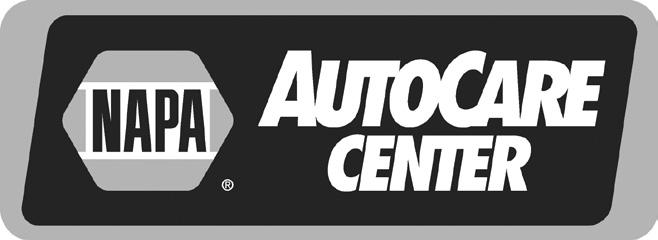
The history of Lake Geneva is not complete without a history of the sanatoriums that were popular in the late 1800s through the 1920s. Geneva Lake Museum board member Sonja Akright has been researching the Lake Geneva Sanitariums for many years.
Akright said the sanitariums were opened in 1885 by Dr. Oscar King and Dr. Henry Palmer, physicians from Chicago. They first opened Oakwood Retreat as a private sanitarium and went on to open several other medical facilities. The others included Lakeside Sanitarium for medical and general cases and in 1896, Lakeside Cottage for the treatment of light nervous disorders, melancholia and addiction recovery.
The very inclusive display of the history of the sanitariums was created by Akright and follows their history from the beginning until they closed. For those interested, it’s worth it to spend some time reading about the sanitariums,
including the story of the children’s sanitarium, Oak Leigh, which was founded by Dr. Mary Pogue in 1903.
Many remember the Playboy Club in Lake Geneva. The club was the creation of Hugh Hefner who first created the Playboy magazine, which was known for its risqué photographs, or at least risqué for that time and became more so over the years.
When Hefner decided to build a Playboy Club in Lake Geneva, he purchased two farms totaling 1,300 acres, just east of downtown. The highlight was the presence of the bunnies – young, attractive women, dressed in tight, strapless corset teddies, with bunny ears to match their outfit, black sheer to waist pantyhose, a bow tie, collar, cuffs, a fluffy cottontail, and very high heels – while serving guests at the Playboy Club.

The club was only in Lake Geneva from 1968 to 1982 but during that time brought in a large number of visitors who came because of the women and to purchase a variety of Playboy souvenirs.
The collection of Playboy paraphernalia collected by the museum is once again on display and includes a pair of bunny ears, souvenir items such as key chains, stirrers, and glasses with the playboy bunny logo, as well as a continuous presentation of historical photos of the time the club was in Lake Geneva.
The story of the Lucius Newberry, the largest and possibly most elegant steamship that cruised Geneva Lake from 1874 until it burned and sank Dec. 6, 1891, is an important part of the history of the lake.
It was built by John French for $16,000, an immense amount of money in 1874.
The boat, after burning and sinking, remained at the bottom of the lake until 1981 when it was recovered by TSR, which helped finance the effort. While
there is not much the ship still in Lake Geneva, the rudder was retrieved and is on display.
Many of the mechanical parts of the Lucuis Newberry that were retrieved were donated to the Smithsonian Institute in Washington D.C.
One of the newest displays is that of the oak trees designed by the Geneva Lake Conservancy. The display tells the story of the history of oak trees which once covered most of southeastern Wisconsin.
Oaks play a critical role in the ecosystem, feeding more than 500 caterpillars with their leafs and 100 mammals and birds who eat the acorns. The trees shelter insects, birds and wildlife and because they sequester more carbon that other trees in North America, play a role in slowing climate change.
There are photographs of three living oak trees in Walworth County that are estimated to be more than 350 years old. They would have begun growing around the year 1670.
Visitors can learn about oak trees and the work the Geneva Lake Conservancy is doing to try to replenish the them in southeastern Wisconsin at this display in the museum.
Throughout the year the Geneva Lake Museum replenishes their exhibits both large and small.
To be opening soon will be A Legacy of Imagination – the Creation of a Culture, which has been under construction for some time, along with the Wizard of Lake Geneva stained glass windows handcrafted by Gilbertson’s Stained Glass.
The Geneva Lake Museum is at 455 Mill St., Lake Geneva.
For more information about exhibits and hours, call 262-248-6060.
Visit the museum online at www. genevalakemuseum.org or follow it on Facebook.






